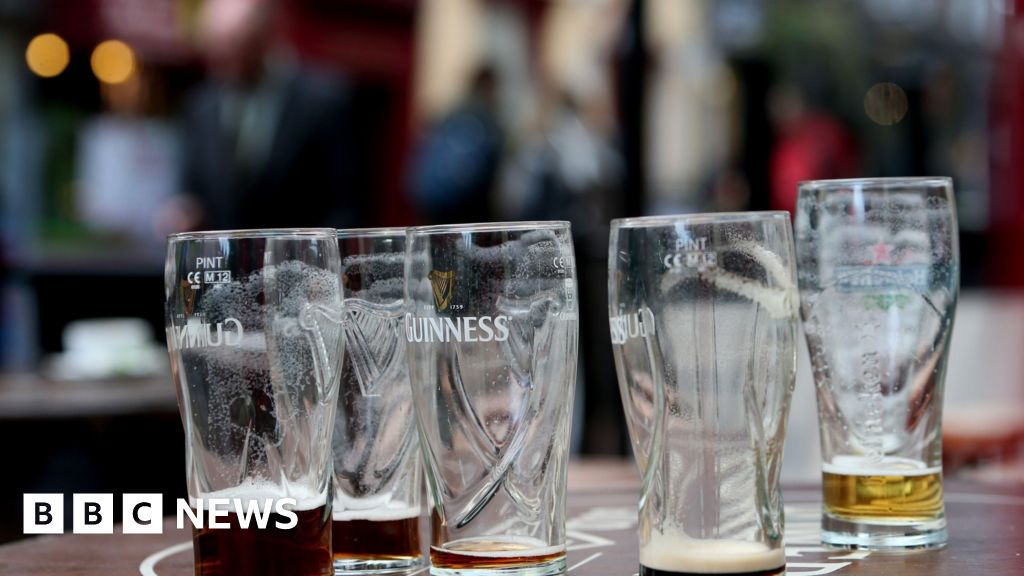Togo midfielder Samuel Asamoah broke his neck in a collision with a pitch-side advertising board in China that his club says could leave him paralysed.
The 31-year-old, who plays for second-tier Chinese side Guangxi Pingguo, collided head-first…

Togo midfielder Samuel Asamoah broke his neck in a collision with a pitch-side advertising board in China that his club says could leave him paralysed.
The 31-year-old, who plays for second-tier Chinese side Guangxi Pingguo, collided head-first…

 PA Media
PA MediaA new set of stamps is being issued to mark 90 years since classic board game Monopoly launched in the UK.
John Waddington Limited of Leeds secured the European licence to make the…

TOYOTA GAZOO Racing World Rally Team driver Kalle Rovanperä has announced his decision to move on from rallying at the end of the 2025 season and pursue an exciting new challenge in motorsport.
The two-time FIA World Rally Champion will…

Pubs and bars in England and Wales could see extended opening hours as the government launches a fast-track a review on “outdated” licensing rules.
The plans could make it easier for venues to serve food outside and host more live music, in a bid to “remove unnecessary barriers”.
Pub landlords and local communities will be able to have their say in a four-week call for evidence. Prime Minister Sir Keir Starmer said the review was about “cutting red tape” and “boosting footfall” to support the UK’s economic growth.
But critics have warned relaxing rules around alcohol would lead to more antisocial behaviour.
Sir Keir said “pubs and bars are the beating heart of our communities”, and added that the government was “backing them to thrive”.
“When our locals do well, our economy does too,” he said.
The call for evidence will focus on nine key recommendations from the Government’s Licensing Taskforce, with particular emphasis on streamlining on-trade alcohol licensing for hospitality venues.
It said it plans to cut the cost of licensing, extend business rates relief and cut alcohol duty on draught pints.
Nick Mackenzie, co-chair of the Licensing Taskforce and chief executive at pub giant Greene King, said updating the licensing system was a “vital step” towards reducing the challenges of running a hospitality business.
“Pubs are faced with continued rising costs, placing them under enormous pressures which is why the Government must continue to back the sector, including critical reforms on business rates which would unlock opportunities for pubs to invest and help drive economic growth,” he said.
Dr Richard Piper, the chief executive of the charity Alcohol Change UK told the Guardian the proposed reforms would be a “charter for chaos” without support from local authorities and health experts.
He said permitting vendors to sell alcohol later into the evening would “inevitably mean more victims of crime, including domestic violence, more antisocial behaviour and disturbance, more police time spent dealing with drink-fuelled incidents and both ambulance and A&E staff having to deal with even more people who have come to harm as a result of alcohol”.
Pubs in England and Wales do not have universal fixed opening hours under current licensing rules. Instead, local authorities grant licenses with specific operating hours which pubs must follow.
The number of pubs in the UK has steadily decreased every year since 2000, according to the British Beer and Pub Association. The association estimates that 378 pubs would close in 2025 across England, Wales and Scotland, amounting to more than 5,600 direct job losses.

Sleep is characterized by rhythmic oscillations that play essential roles in neural plasticity and cognition. Among these, sleep spindles—~12 Hz rhythmic bursts during NREM sleep—originate in thalamocortical networks and…

The medial meniscus posterior root tear (MMPRT) is a clinically significant injury characterized by avulsion of the posterior root attachment of the medial meniscus.1–3 As a critical structure for maintaining joint biomechanics,…

Valeo Group | 9 Oct, 2025
| 6 min
A breakthrough in sustainable transmissions: Valeo remanufactures the complex DQ250 dual wet clutch, which is fitted to more than 5 million vehicles in Europe.

Valeo Group | 9 Oct, 2025
| 5 min
This milestone marks the completion of a project led by The Future is NEUTRAL and its subsidiary THE REMAKERS, to develop a competitive circular offering with low environmental impact.
This new offering reduces the price by 30% compared to the equivalent new product and consumption of natural resources by at least 45%.

Valeo Group | 9 Oct, 2025
| 4 min
A strategic partnership and a unique training program to prepare the 140 automotive expertise firms in the LIDEO network for tomorrow’s innovations.